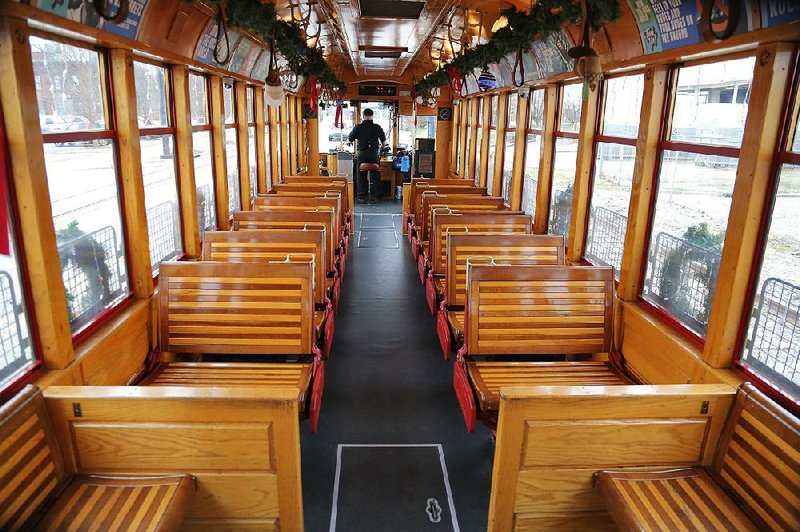Work on the 30 Crossing project will lead to a "significant" impact on Rock Region Metro's downtown streetcar system, mostly on its extension connecting the Clinton Presidential Library, the Pulaski County transit agency's top executive said Tuesday.
While Charles Frazier said he won't know the precise impact of the nearly $1 billion project to overhaul the Interstate 30 corridor through downtown Little Rock and North Little Rock until the final design plans are drawn up, he told the Rock Region Metro board of directors it will be more extensive than what was anticipated two years ago.
At that time, the impact involved moving about 10 poles supporting the catenary, which is the system of overhead wires used to supply electricity to the streetcars.
"Compared to that, yes, the changes are much more significant," he said in response to a question from board member Jimmy Moses.
But Frazier said it could have been worse.
"At one point last year, there was talk that the system -- the entire system -- could be offline for upwards of five years," he said."
And now?
"We've landed somewhere closer to the middle," Frazier said. "As of the plans today, and the plans are still changing, it would a minimal impact to the Little Rock loop and it will be a longer-term impact for the extension to the Clinton Library."
According to agency documents, the project will require "temporary and permanent modifications" to the streetcar system, "including reconstruction of the overhead catenary system and track elements."
The board voted Tuesday to allow Frazier to hire a rail engineering firm with expertise in streetcar system to represent Rock Region in consulting with the Arkansas Department of Transportation on the 30 Crossing project at a cost of no more than $250,000 over four years.
"The owner's representative will provide oversight and management of pre-construction, construction and project closeout functions on behalf of Rock Region Metro during the 30 Crossing project," according to Blake Mhoon, Rock Region's procurement manager.
The transit agency issued requests for qualifications April 8. They were due May 6. Staff will be conducting evaluations for the qualifications and select the "most qualified firm" and present the decision at the board's June meeting.
The Metro streetcar system has been operating for 18 years. Its first phase opened in 2004. A second phase that took trolley service to the Clinton Presidential Center opened in 2007.
Civic leaders have said the trolleys have helped spurred revitalization in downtown and fostered economic development. They often are featured in materials promoting the area.
Rock Region eliminated fares on the streetcars in 2019, a decision that spurred a 10-fold increase in ridership.
But the agency shut down the system last month as non-essential because of the covid-19 pandemic.
Now the streetcar service is in the crosshairs of 30 Crossing. The largest project ever undertaken by the Transportation Department, it would widen the 6.7-mile corridor from Interstate 530 in Little Rock to Interstate 40 in North Little Rock to 10 lanes from six and replace the bridge over the Arkansas River.
Central Arkansas planners had long called for an overhaul of the congested corridor, which features the convergence of six major highways in the space of fewer than seven miles. The I-30 bridge over the Arkansas River, which dates to the late 1950s and was built at a cost of $5.5 million, carries 124,000 vehicles daily.
The latest design for the 10-lane alternative features four lanes that would be more like city streets, with ramps to lower speeds, narrower lanes, traffic signals and other features that will, officials say, allow traffic moving on or off I-30 to safely interact with pedestrians and other non-interstate traffic.
The 10-lane alternative has been referred to as a mix of six main through lanes with four collector-distributor lanes. The latter are separated by a wall from the main lanes, have slower speeds and allow traffic traveling between Little Rock and North Little Rock to cross the bridge without entering the main interstate lanes.
The project also includes improvements to the section of I-40 between John F. Kennedy Boulevard and U.S. 67/167 in North Little Rock and a new interchange in Little Rock to replace the one known as the Cantrell Road/I-30 interchange. Removal of the Cantrell/I-30 interchange would create what city officials envision as a 17-acre park.
Metro on 05/13/2020
